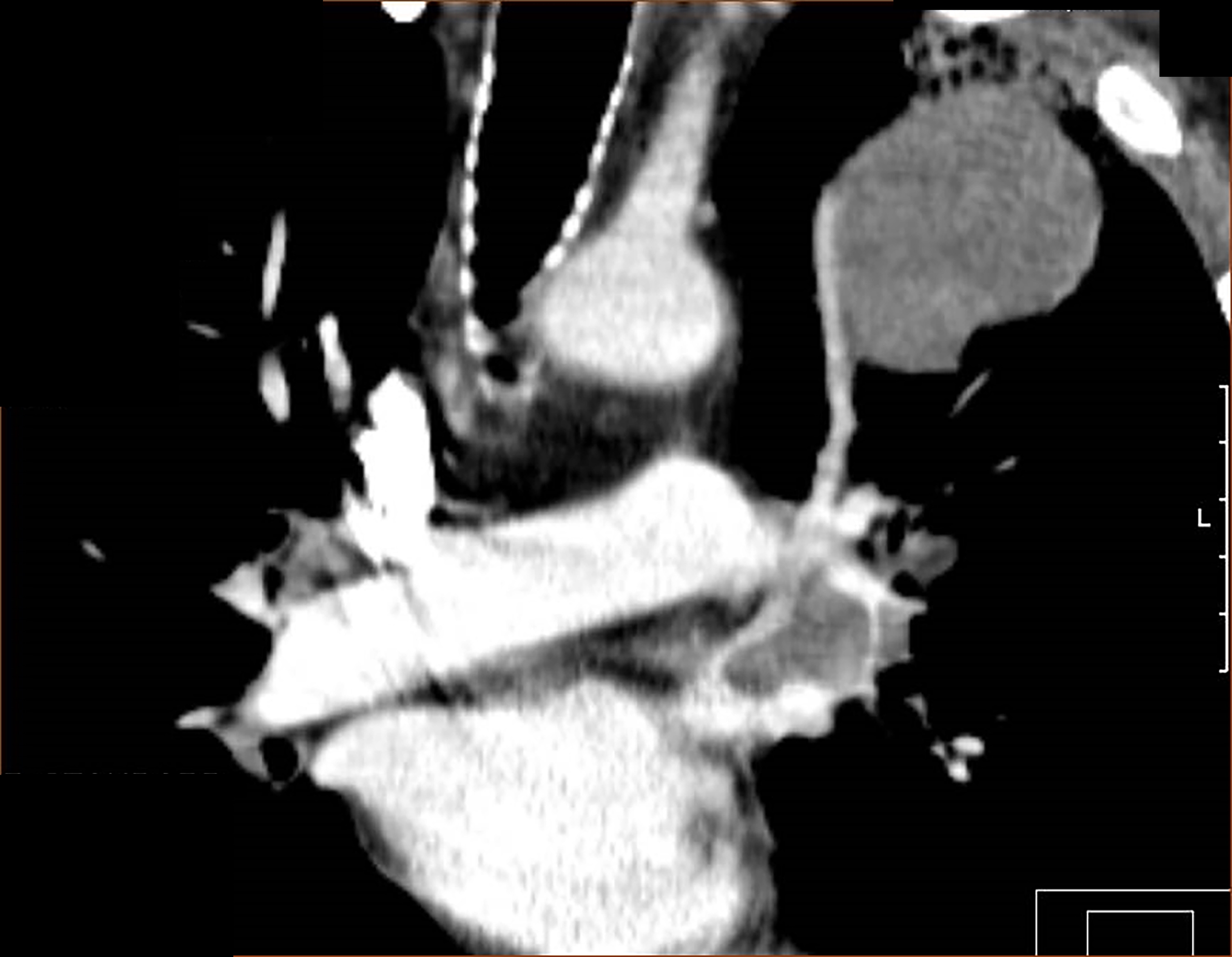Malignant Embolus Causing Leg Ischemia
Hao Pham, MD, Andrew J. Seiwert, MD, FACS.
ProMedica Toledo Hospital, Toledo, OH, USA.
Objective:
There are less than 20 reported cases of malignant tumor arterial emboli presenting as acute limb ischemia. We report such a case as a missed diagnosis.
Methods:
Case report prepared from information from medical records and the surgical team that cared for the patient.
Results:
A 52-year-old man with a history of smoking (>80 packs per year) was admitted to an outside facility with left leg pain and redness. He was diagnosed with cellulitis and treated with parenteral antibiotics. A chest x-ray showed a large upper-lobe mass, identified as small cell lung cancer by fine-needle aspiration biopsy. The anterior calf "cellulitis" evolved to dry gangrene over 14 days, and he was transferred to our institution, suspecting arterial insufficiency. Arteriography revealed multiple filling defects in the left common femoral, deep femoral, and superficial femoral arteries. The reconstituted popliteal artery was contiguous with the posterior tibial artery to the ankle, but the anterior tibial and peroneal arteries were completely occluded. His skin infarction perfectly matched this angiosome distribution. Left common femoral artery exploration was performed, embolectomy returned gray granular material. Left below-knee amputation was performed 48 hours later. Final histology confirmed neoplastic emboli, identical to his primary tumor biopsy, so only palliative chemoradiation therapy was offered. The amputation stump healed uneventfully. He presented one month later with acute onset bilateral leg numbness and pain. A trans-brachial angiogram revealed distal aortic embolic occlusion, with iliac reconstitution via lumbar collaterals. He declined any intervention initially, enduring profound ischemic rest pain. He returned three weeks later for iliac embolectomy and possible stenting. At operation, a 2 cm rubbery mass in his inguinal scar was discovered, excised, and returned as metastatic lung cancer on frozen section. The procedure was terminated. The patient was discharged to Hospice care, where he expired shortly thereafter.
Conclusion:
We describe a case of limb ischemia in a patient with lung cancer, a common comorbidity. Malignant embolus presenting as regional skin infarction and acute limb ischemia is a rare entity, but should always be considered in this setting. An understanding of regional angiosomes would likely have hastened diagnosis and treatment. 
Back to 2017 ePosters




